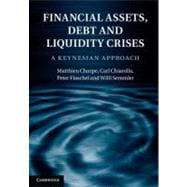
Note: Supplemental materials are not guaranteed with Rental or Used book purchases.
Purchase Benefits
What is included with this book?
| List of figures | |
| List of tables | |
| Notation | |
| Preface | |
| Financial crises and the macroeconomy | |
| The Nonlinear Dynamics of Credit and Debt Default | |
| Currency crises, credit crunches and large output loss | |
| Mortgage loans, debt default and the emergence of banking crises | |
| Debt deflation and the descent into economic depression | |
| Theoretical Foundations for Structural Macroeconometric Model Building | |
| Keynesian macroeconometric model building: a point of departure | |
| Intensive form and steady state calculations | |
| Partial feedback structures and stability issues | |
| Debt Crises: Firms, Banks and the Housing Markets | |
| Debt deflation: from low- to high-order macrosystems | |
| Debt default, bankruptcy of firms, and banks' performances | |
| Japan's institutional configuration and its financial crisis | |
| Housing investment cycles, workers' debt and debt default | |
| Bibliography | |
| Table of Contents provided by Publisher. All Rights Reserved. |
The New copy of this book will include any supplemental materials advertised. Please check the title of the book to determine if it should include any access cards, study guides, lab manuals, CDs, etc.
The Used, Rental and eBook copies of this book are not guaranteed to include any supplemental materials. Typically, only the book itself is included. This is true even if the title states it includes any access cards, study guides, lab manuals, CDs, etc.